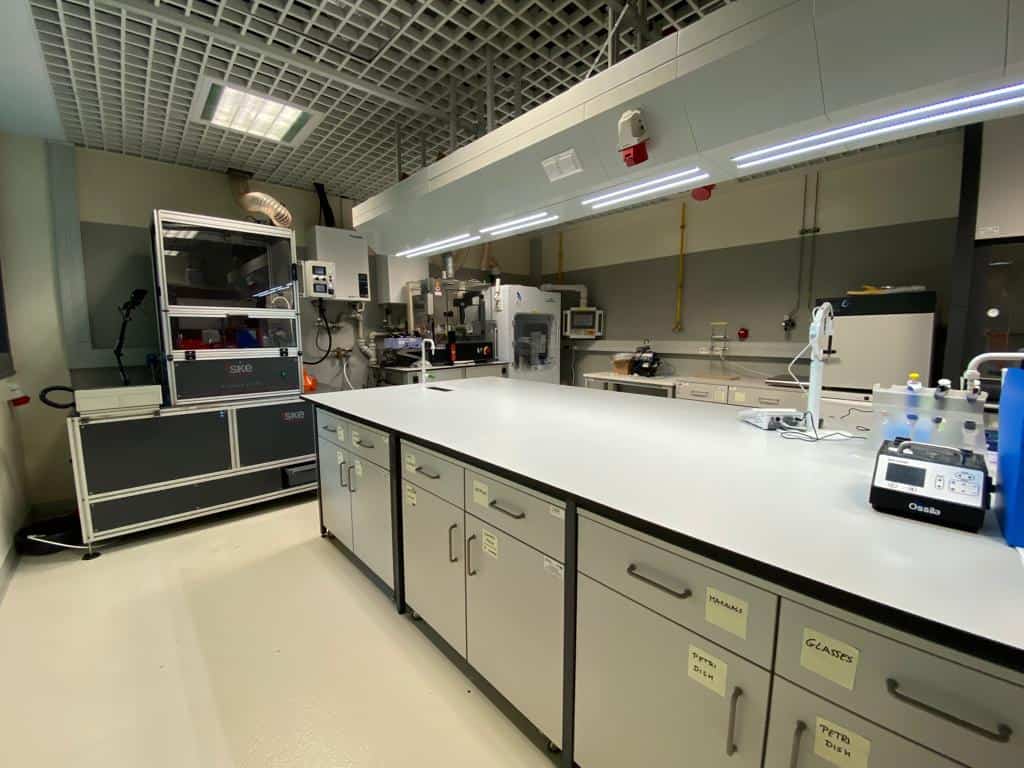Electrospinning with climate control – IME Technologies

The device allows to produce polymer fibers from nano- to micro- scale in the electrospinning. The fibers are obtained from polymer solutions dissolved in volatile solvents. The chamber is equipped with a climate control. It ensures stable and reproducible environmental conditions thanks to the regulation of temperature and relative humidity inside the chamber. The device allows to electrospun fibers at the horizontal or vertical nozzle position in relation to the collector. It is also possible to use two nozzles at the same time or layer by layer and create fiber composites. Combination of different types of deposited fibers allow to control properties of the obtained composites.
Specification:
• max. voltage: +/- 25 kV
• climate control range: temperature 20-30 °C and relative humidity 20-70%
• possibility of changing the polarity of the voltage applied between the nozzle and the collector
• 4 pumps delivering the polymer solutions
• gas shield
Three types of nozzle:
• standard nozzle – single needle
• co-axial nozzle
• side-by-side nozzle
Collectors:
• rotating drum with diameter of 9 cm and length of 18 cm
• wire collector
• rotating drum to cryo-electrospinning
• collector rotation speed: 1 – 2500 rpm (production of fibers with random or aligned orientation, what depend on the rotation speed)
The equipment was purchased within the funding from Sonata 8 project, No 2014/15/D/ST5/02598, granted by the National Science Centre in Poland.
Electrospinning with climate control – SKE Research Equipment

The device allows to produce polymer fibers from nano- to micro- scale in the electrospinning. The chamber is equipped with a climate control. It ensures stable and reproducible environmental conditions thanks to the regulation of temperature and relative humidity inside the chamber.
Specification:
• max. voltage: +/- 40 kV
• climate control range: temperature 20-40 °C and relative humidity 20-65%
• 2 pumps delivering the polymer solutions
Three types of nozzle:
• standard nozzle – single needle
• double nozzle
• co-axial nozzle
Collectors:
• 6 different rotating drums with diameter from 1 cm to 18 cm.
• collector rotation speed: 1 – 1500 rpm
The equipment was purchased within the funding from ERC-2020-STG project (BioCom4SavEn), ERC grant agreement no. 948840, granted by the European Research Council under the European Union’s Horizon 2020 Framework Programme for Research.
Electrospinning with yarn module – TechNOVA

The device allows to produce electrospun polymer fibers and yarns. The chamber is equipped with a temperature control system and humidity stabilizer (30%). The device allows to produce fibers at the horizontal or vertical nozzle position in relation to the collector. Additionally, this machine is equipped with a vortex collector allowing obtain polymer yarns.
Specification:
• max. voltage: +/- 40 kV
• chamber with control temperature 20-40 °C and stable humidity 30%
• possibility of simultaneous electrospinning with different electrical polarity (positive for first nozzle and negative for second nozzle)
• 2 pumps delivering the polymer solutions
Three types of nozzle:
• two single nozzles
• co-axial nozzle
Collectors:
• rotating drum with diameter of 10 cm and length of 15 cm
• vortex collector
• collector rotation speed: 1 – 150 rpm (for drum) and 1- 1200 rpm (for vortex)
The equipment was purchased within the funding from ERC-2020-STG project (BioCom4SavEn), ERC grant agreement no. 948840, granted by the European Research Council under the European Union’s Horizon 2020 Framework Programme for Research.
Tensile Module with 1 N Load Cells, Peltier Stage, and possibility to in-situ measurement in scanning electron microscope (SEM)

The tensile module with 1 N Load Cell ensures high measuring accuracy during uniaxial stretching test of selected materials (about ± 0.1 µN). The device has removable holders for attaching membranes, polymer fibers and polymer films. Additionally, it is possible to place the module in the scanning electron microscope (Zeiss Merlin Gemini II) for in-situ measurements.
The following materials can be tested:
• polymer fibers
• polymer membranes
• polymer films
Specification:
• Maximum tensile strength: 1 N
• Strength measuring accuracy: 0.01 µN
• Stretch speed: od 0.01 µm/s do 50 µm/s
• Maximum elongation: 3 cm (~400%)
• Peltier module operating temperature range: -10°C do 60°C
The equipment was purchased within the funding from SONATA BIS 5 project, No 2015/18/E/ST5/00230, granted by the National Science Centre in Poland.
Nanosurf Core AFM – Atomic Force Microscope

Core AFM microscope allows for the examination of a wide variety of samples in air, gases and also in liquids. The microscope allows measurements on samples from metals, ceramics, polymers and biological samples. The installed scanner enables maximum scan range (XY) of 100 um2 with maximum height difference of 12 µm. With atomic force microscope topographic information can be obtained coupled with materials physical properties.
The microscope is capable of measurements in:
• Static Force Mode (with Phase Imaging Mode)
• Dynamic Force Mode (Tapping Mode)
• Piezoelectric Force Microscopy (PFM)
• Electrostatic Force Microscopy (EFM)
• Kelvin Probe Force Microscopy (KPFM)
• Lithography
• Stiffness and Modulus
• Adhesion
• Scanning thermal microscopy (SThM) module
The AFM is capable of operating in both contact and tapping mode.
The equipment was purchased within the funding from OPUS 17 project, No 2019/33/B/ST5/01311, granted by the National Science Centre in Poland.
Scanning thermal microscopy (SThM) module was purchased within the funding from ERC-2020-STG project (BioCom4SavEn), ERC grant agreement no. 948840, granted by the European Research Council under the European Union’s Horizon 2020 Framework Programme for Research.

Phenom ProX – Desktop Scanning Electron Microscopy (SEM)
The sixth-generation of Thermo Scientific Phenom ProX G6 Desktop SEM fills the gap between light microscopy and floor-model SEM analysis, thus expanding the capabilities of research facilities. It offers fast, high-resolution imaging in addition to an integrated energy-dispersive X-ray diffraction (EDS) detector for robust, easy-to-use, rapid elemental analysis.
The equipment was purchased within the funding from ERC-2020-STG project (BioCom4SavEn), ERC grant agreement no. 948840, granted by the European Research Council under the European Union’s Horizon 2020 Framework Programme for Research.
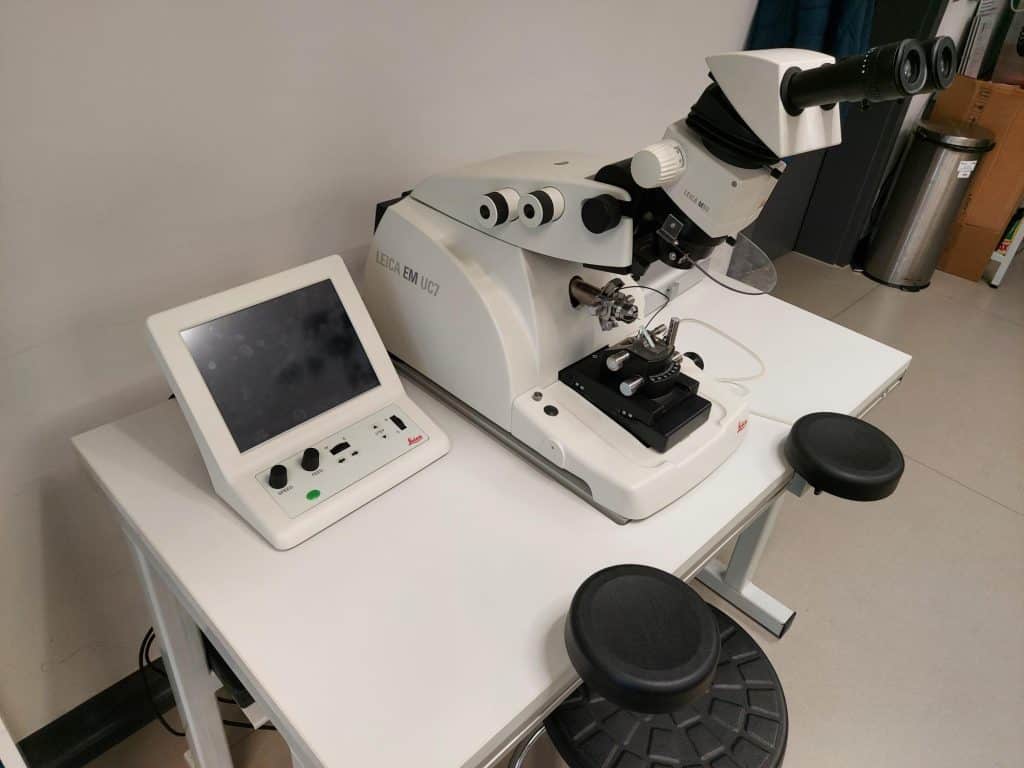
Ultramicrotome Leica EM UC7
The Leica EM UC7 ultramicrotome is a tool that provides easy preparation of thin and ultra-thin sections with perfectly smooth surfaces. Preparing biological / industrial samples for observation by TEM, SEM, AFM or LM, has never been so precise and so easy.
Key features:
• Cutting speed control possible;
• Feed step control.
The equipment was purchased within the funding from the European Union’s Horizon 2020 research and innovation programme under grant agreement No 958174 and within M-ERA.NET 3 funded by National Science Centre, Poland No 2021/03/Y/ST5/00231

SurPASS 3 – Electrokinetic analyzer for solid surface analysis
The SurPASS 3 is a fully automated zeta potential analysis of macroscopic solids under real-life conditions. The zeta potential is related to the surface charge at a solid/liquid interface and is a key parameter for understanding surface properties and developing new specialized materials.
Key features:
• Fully automated zeta potential analysis on macroscopic solids
• Automated detection of the isoelectric point
• Time-dependent recording of liquid-on-solid adsorption kinetics
Accessories:
• Adjustable Gap Cell – suits any sample geometry or size. The used measuring cell is recognized automatically. The Adjustable Gap Cell extends the range of applications to small samples with a rectangular or disk shape.·
• Cylindrical Cell – is mainly used for the investigation of natural/technical fibers, granular samples or particles.
The equipment was purchased within the funding from OPUS 17 project, No 2019/33/B/ST5/01311, granted by the National Science Centre in Poland.

AccyPyc II 1345 Pycnometer – Gas Displacement Pycnometry System
Gas pycnometry is a technique to obtain true, absolute, skeletal, and apparent volume and density. This non-destructive technique uses the gas displacement method to measure volume. Inert gases, in this case helium, are used as the displacement medium.
The AccuPyc II Series 1345 pycnometer is a fast, fully automatic pycnometer that provides fast and precise volume measurements and material density calculation (powders, solids and suspensions).
The equipment was purchased within the “Nanofiber-based sponges for atopic skin treatment” project carried out within the First TEAM program of the Foundation for Polish Science co-financed by the European Union under the European Regional Development Fund, project No POIR.04.04.00-00- 4571/17-00.

Zeiss Primo Star 51 – Light Microscope
Objectives:
• 10x / (Plan Achromat);
• 20x / (Plan Achromat);
• 40x / (Plan Achromat);
• 100x / (Plan Achromat, oil);
Fototubus 30°/20 (50:50)
Plan-Achromat 40x/0.65 Ph2
Slider Ph2
Camera: Axiocam 208 color – 8.3 MP, Ultra HD (4K) – USB/ wi-fi
The equipment was purchased within the funding from ERC-2020-STG project (BioCom4SavEn), ERC grant agreement no. 948840, granted by the European Research Council under the European Union’s Horizon 2020 Framework Programme for Research.

Chronos 1.4 High Speed Camera
Chronos 1.4 is a 1.4 gigapixel-per-second handheld high-speed camera. It records 1280×1024 video at 1057fps and can record at up to 38 500fps at lower resolution (336×90). Video is saved in compressed h.264 or uncompressed RAW format to removable media.
Key features:
• 1.4Gpx/s, 1.3 megapixel image sensor captures 1280×1024 @ 1057fps, and up to 38500fps at lower resolution.
• Monochromatic detector.
• 32GB memory – 16 second record time.
• High sensitivity of ISO 740-11 840 (Monochrome) enables shooting with modest lighting.
The equipment was purchased within Research Subsidy No 16.16.110.663 at the AGH University of Science and Technology in Kraków, Poland.

Mettler Toledo DSC 3 – Differential scanning calorimetry (DSC)
DSC measures enthalpy changes in samples due to changes in their physical and chemical properties as a function of temperature or time.
Key features:
• temperature range from -80°C to 500°C
• autosampler
The equipment was purchased within the funding from ERC-2020-STG project (BioCom4SavEn), ERC grant agreement no. 948840, granted by the European Research Council under the European Union’s Horizon 2020 Framework Programme for Research.

Mettler Toledo XPR Analytical Balance (XPR105DR)
Key features:
• maximum capacity – 41g
• readability – 0.01 mg
• results notepad
The equipment was purchased within the funding from ERC-2020-STG project (BioCom4SavEn), ERC grant agreement no. 948840, granted by the European Research Council under the European Union’s Horizon 2020 Framework Programme for Research.

Mettler Toledo Conductometer (SevenCompact S210) with conductivity probe (InLab 720)
This device is designed to measure conductivity of polymer solutions with special emphasis on aggressive or organic solvents.
Key features:
• Measuring range: 0.1 – 500 µS/cm
• Temperature range: 0 °C – 100 °C
• Resist harsh and organic chemicals
The equipment was purchased within the “Nanofiber-based sponges for atopic skin treatment” project carried out within the First TEAM program of the Foundation for Polish Science co-financed by the European Union under the European Regional Development Fund, project No POIR.04.04.00-00- 4571/17-00.

Nicolet™ iS™ 5 – Fourier Transform Infrared (FTIR) Spectroscopy
Key features:
• spectral range: 4000-350 cm-1
• IR-optimized KBr beam splitter
• High sensitivity
• Spectral resolution ~ 0.8 cm(-1),
• High sensitivity DLaTGS detector
• Diode laser
• BaF2 coated KBr (optionally ZnSe) windows protected against humidity
The equipment was purchased within the funding from ERC-2020-STG project (BioCom4SavEn), ERC grant agreement no. 948840, granted by the European Research Council under the European Union’s Horizon 2020 Framework Programme for Research.

Thermal Camera FLIR T560
Key features:
• 640 × 480 (307,200 pixel) thermal imaging camera
• bright 4″ LCD screen
• 180° rotating lens platform
• 14° and 42° field of view lenses
The equipment was purchased within the funding from ERC-2020-STG project (BioCom4SavEn), ERC grant agreement no. 948840, granted by the European Research Council under the European Union’s Horizon 2020 Framework Programme for Research.
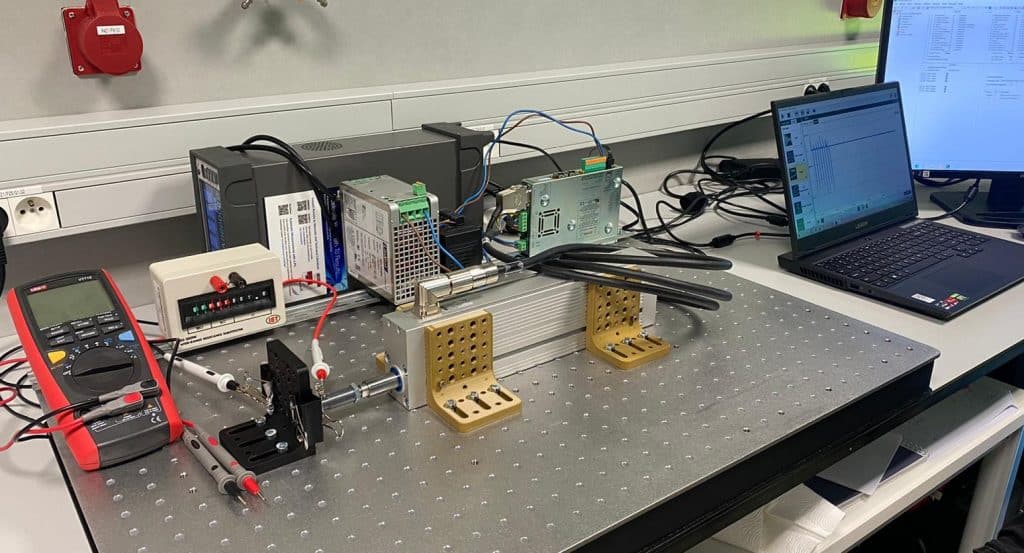
Tribo- and piezoresponse measurement setup
This device is used to measure the piezoelectric and triboelectric response induced by contacting materials.
This setup includes:
• Digital multimeter (Keithley DMM6500) with KickStart DMM software
• Linear motor (LinMot – P04)
• Decade box (RS-201 – 0 to 99 MΩ)
The equipment was purchased within Research Subsidy No 16.16.110.663 at the AGH University of Science and Technology in Kraków, Poland.
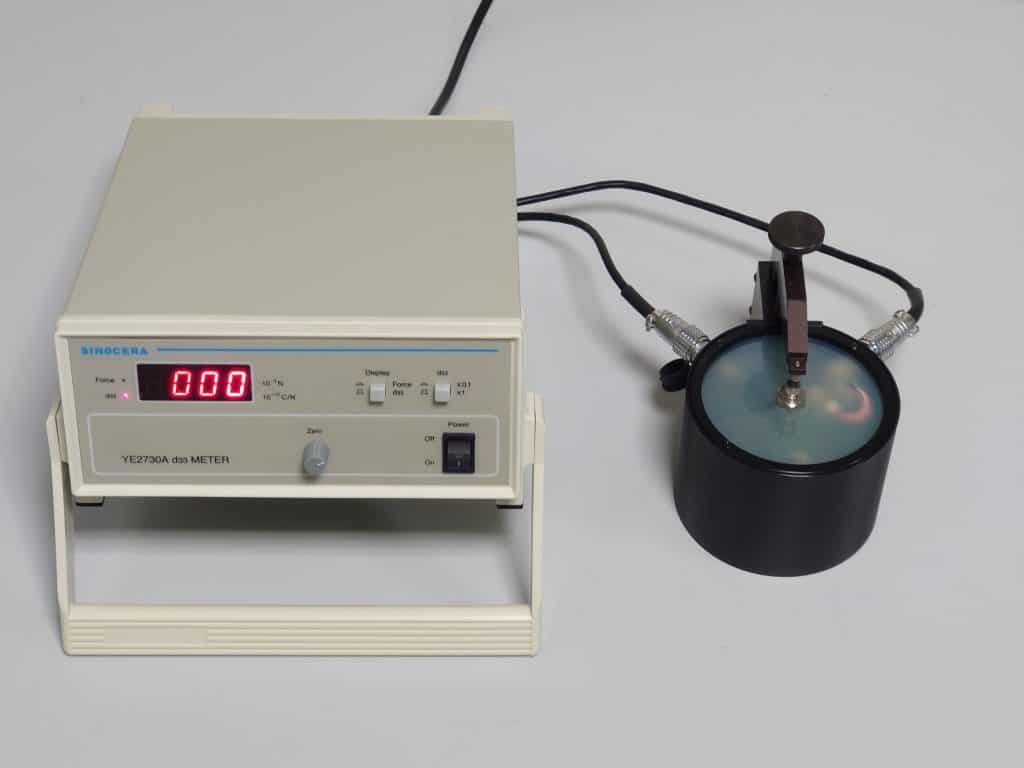
D33 METER
D33 meter is a special instrument directly to measure piezoelectric constant d33 values of piezoelectric ceramics, polymers, and single crystals. This meter can also measure d33 value in various single crystal materials, such as lithium niobate, quartz, and tourmaline.
Key features:
• D33 Range: x 1 range: 1-200 and 10-2000 pC/N
• Accuracy: ±2% (for 10-2000 pC/N) and ±5% (for 20 to 2000 pC/N)
• Resolution: 0.1 pC/N (for 10-2000 pC/N) and 1 pC/N (for 20 to 2000 pC/N)
• Polarity Indication
The equipment was purchased within Research Subsidy No 16.16.110.663 at the AGH University of Science and Technology in Kraków, Poland.
Cells Culture and Biomaterials Laboratory

Equipment for cell culture study:
• Confocal Light Scanning Microscope
• Fluorescence microscope
• Multimode Microplate Reader
• Laminar flow hood.
• Incubator.
• Steam sterilizer.
• Centrifuge.
• Vortex.
Zeiss LSM 900 with Airyscan2 – Confocal Light Scanning Microscope

The microscope is used to image samples in fluorescence.
Specification:
Eight-position condenser (brightfield, darkfield, Ph1, Ph2, Ph3, 3 places for Nomarski contrast prisms).
Objectives (all objectives equipped with Nomarski contrast; 40x and 63x in the super-resolution version;):
• 10x/N.A. 0,45 / (Plan Achromat);
• 20x/N.A. 0,8 / (Plan Achromat);
• 40x/ N.A. 1,30 / (Plan Achromat, oil);
• 63x/ N.A. 1,40 / (Plan Achromat, oil);
Fluorescent illuminator Colibri 5 with 385, 475, 555, and 630 nm LEDs;
Fluorescent filters for DAPI, FITC, TRITC, and Cy5;
A set of four diode lasers: 405 nm, 488 nm, 561 nm, 640 nm;
Confocal detection system with three channels for simultaneous registration of fluorescence;
• System of 4 detectors (2 detectors in the confocal head, 1 detector of transmitted light, 1 matrix detector built of 32 GaAsP elements in the super-resolution head);
• Parallel and sequential scanning mode, allowing the registration of up to 8 channels (the ability to view all channels and their imposition);
• Ability to define time sequences with the option of photoactivation or photobleaching;
•Spectral detection with the possibility of simultaneous use of three detectors, adjustable with an accuracy of 1 nm;
• Fluorescent image analysis toolkit.
The equipment was purchased within the “Nanofiber-based sponges for atopic skin treatment” project carried out within the First TEAM program of the Foundation for Polish Science co-financed by the European Union under the European Regional Development Fund, project No POIR.04.04.00-00- 4571/17-00.

Leica DMi1 – Inverted Microscope for Cell Culture
Key features:
• LED illumination 5 W
• 4x, 10x, 20x, 40x objective lenses
• possibility of observing in bright field and phase contrast
• Flexcam C1 camera, 8.3 MPx
The equipment was purchased within the funding from OPUS 17 project, No 2019/33/B/ST5/01311, granted by the National Science Centre in Poland.

Promega GloMax Discover Plate Reader
Multimode Microplate Reader with Advanced Detection Capabilities
Key features:
• Luminescence, fluorescence, UV-visible absorbance, BRET and FRET detection
• 6- to 384-well microplate reader
• Optimized with Promega cell viability and genetic reporter assays.
The equipment was purchased within the funding from OPUS 17 project, No 2019/33/B/ST5/01311, granted by the National Science Centre in Poland.
The electrospinning laboratory
